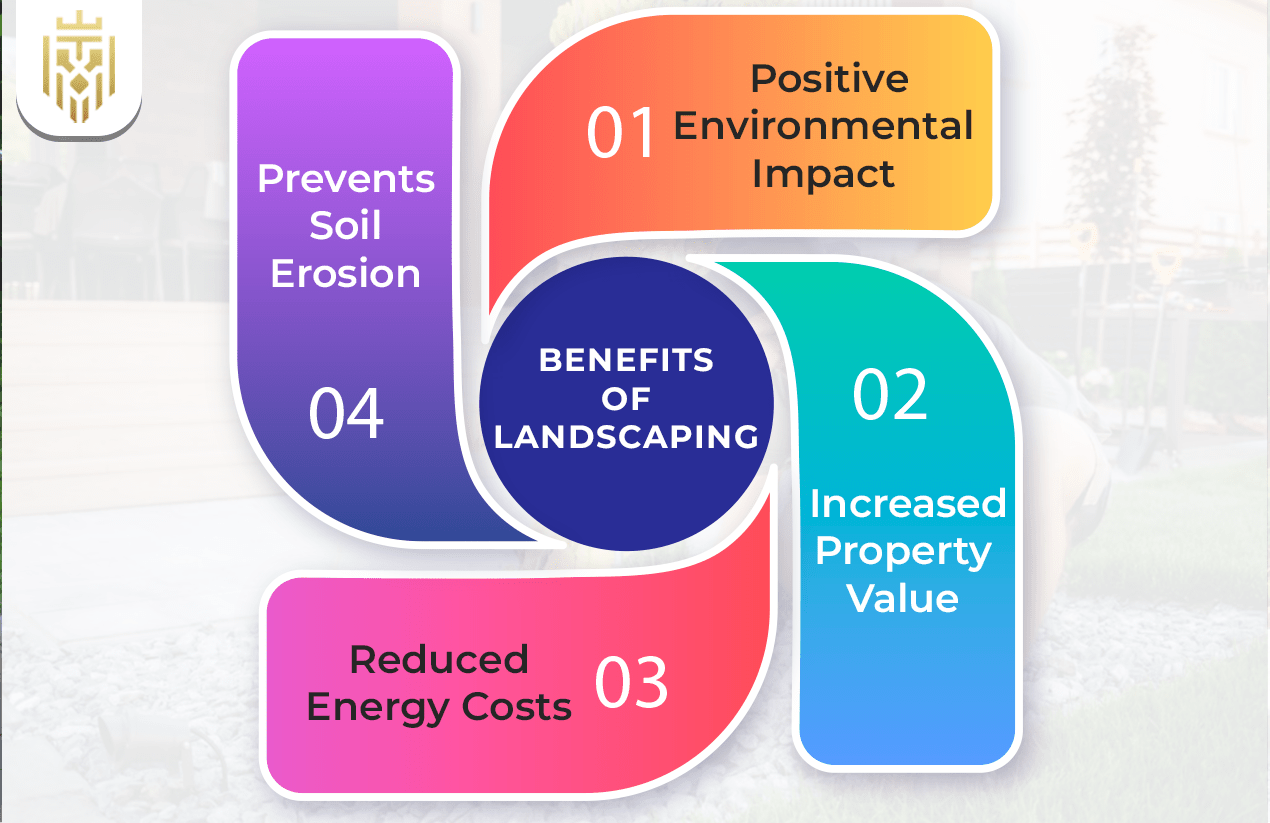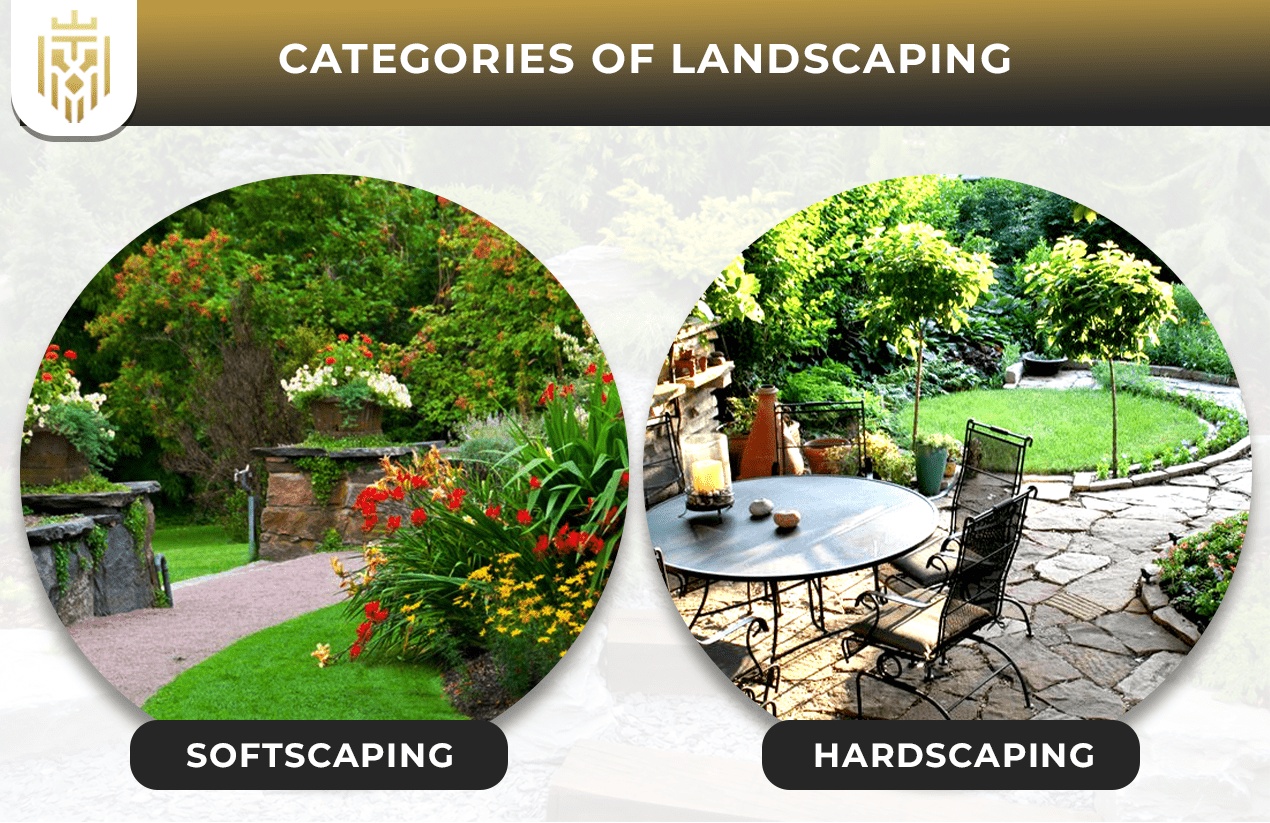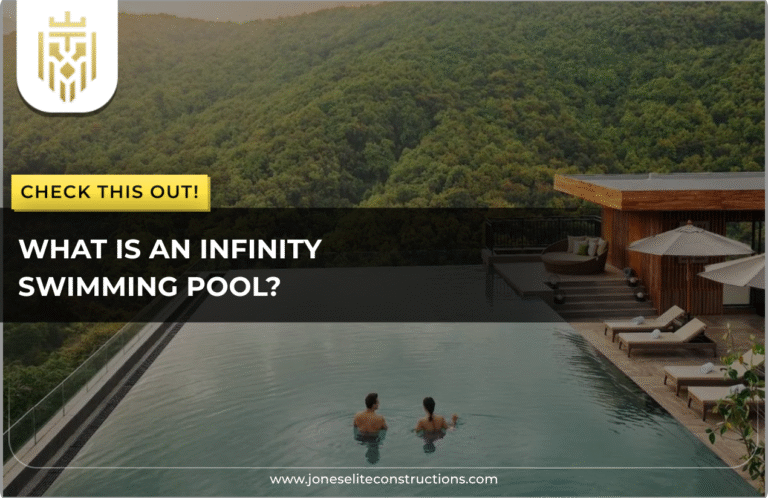What is Landscaping?
Landscaping signifies the planning, arrangement, and modification of plants and buildings and so forth to enhance the appearance and usefulness of outdoor spaces. A good landscape design takes into consideration both beauty and the practical functions of outdoor space, thus creating an appeal to prospective owners of such lands.
Benefits of Landscaping
Landscaping offers several benefits, including a positive environmental impact, increased property value, reduced energy costs, and prevents soil erosion.

-
Positive Environmental Impact
Landscaping has a major beneficial impact on the environment. By purifying the air and water, enriching biodiversity, and conserving natural resources, landscaping serves as a gift for improving outdoor environments. Good landscaping practices include those that use green elements to support wildlife habitats while minimising the collapse and erosion effects of adverse run-off.
-
Increased Property Value
A beautiful landscape activity increases property value. An appealing outdoor setup done with an understanding of what is landscaping draws more attention from potential buyers, which improves curb appeal. This often-overlooked feature of landscaping boosts the perception of property value, resulting in increased resale price and enhanced sale speed.
-
Reduced Energy Costs
Apart from aesthetic enhancements, landscaping done in a strategic manner helps in energy conservation. Trees and shrubs act freely as insulators against heat, providing shade in summer and restricting wind flow in winter. This careful arrangement in outdoor space will serve to conserve energy and eventually lower the electricity bill through all seasons, thus making the landscaping doubly green and economical.
-
Prevents Soil Erosion
Environmentally inspired landscaping techniques can also provide a means by which soil erosion can be prevented. In landscaping, for soil stabilization, the usage of plant materials with well-established root systems restricts the amount of run-off and damages to the surface. Such an e-landscaping intervention is also compliant with environmental preservation.
Categories of Landscaping
There are two core categories of landscaping: softscaping – deals with the living parts of a landscape like shrubs, grass, and tress, and hardscaping – deals with non-living elements like walkways, barriers, and patios that outline and structure outdoor areas.

-
Softscaping
Softscaping includes all the living parts of a landscape, such as plants, shrubs, trees, and grass. It serves to dot values in outdoor spaces while adding to their aesthetics; these kinds of landscapes are used to conclude texture and color there. Softscaping should be added to ensure a balanced and ecologically minded atmosphere within the landscape design.
-
Hardscaping
Hardscaping deals with the non-living elements like walkways, barriers, and patios that outline and structure outdoor areas. This type of landscaping provides a lasting nature, ensuring the right surfaces and structural features to contrast and complement the aesthetics of the natural greenery, enhancing unified landscape design.
Types of Landscaping
Landscaping is divided into several types depending on their implementation: residential landscaping, commercial landscaping, xeriscaping, tropical landscaping, and minimalist landscaping.

-
Residential Landscaping
Residential landscaping turns private outdoor areas into garden-like beautiful and pleasing residences. It involves lawns, gardens, and other structured elements like patios that suit the aesthetic of the homeowner. This type of landscaping boosts the curb appeal by enhancing livability by creating personalized comfortable outdoor environments.
-
Commercial Landscaping
Commercial landscaping enhances the aesthetic components of business-type outdoor areas, combining greenery with built elements to fill a professional and approachable environment. Landscape maintenance enhances the brand image, while the functional and aesthetic benefits of landscaping extend to customers, employees, and visitors.
-
Xeriscaping:
Xeriscaping is a recent landscaping approach that focuses on water conservation in outdoor spaces. This goes with the introduction of drought-tolerant plants and little irrigation, thus rendering it environmental and easy to maintain. This water-efficient form of landscaping blends sustainable functionality with an attractive design, one that is most suited for regions with limited water.
-
Tropical Landscaping
The style of landscape that creates opulent and exotic outdoor environments through a riot of lush green and colorful flowers is known as tropical landscaping. This landscape style depends upon the tropical plant elements to create a paradisaical feel. It is a dramatic landscaping style that draws you deep into nature while bringing beauty and serenity to any outdoor space.
-
Minimalist Landscaping
The minimalist landscape transforms the outdoors into a sleek and simple area. The lines are clean, geometric shapes, and select plant elements come together in the name of harmony and simplicity. This landscape approach thrives on functionality and order, making it a staple for modern homeowners seeking peace in their outdoor lives.
FAQs
1) What is Landscaping?
Landscaping signifies the planning, arrangement, and modification of plants and buildings and so forth to enhance the appearance and usefulness of outdoor spaces. A good landscape design takes into consideration both beauty and the practical functions of outdoor space, thus creating an appeal to prospective owners of such lands.
2) What are the benefits of landscaping?
Landscaping offers several benefits, including a positive environmental impact, increased property value, reduced energy costs, and prevents soil erosion.
3) What are the main categories of landscaping?
There are two core categories of landscaping: softscaping – deals with the living parts of a landscape like shrubs, grass, and tress, and hardscaping – deals with non-living elements like walkways, barriers, and patios that outline and structure outdoor areas.
4) What are the types of landscaping?
Landscaping is divided into several types depending on their implementation: residential landscaping, commercial landscaping, xeriscaping, tropical landscaping, and minimalist landscaping.









